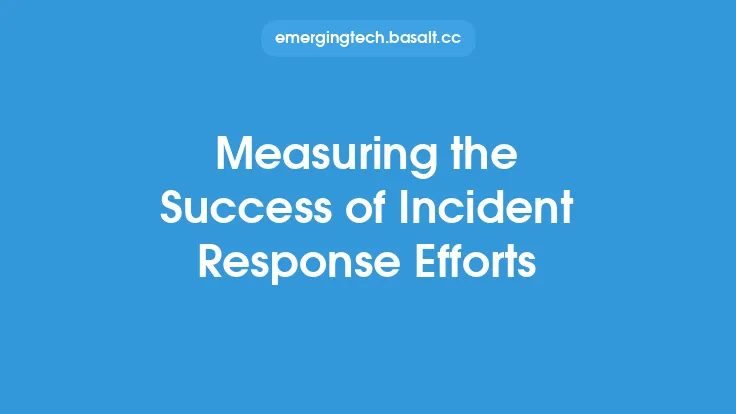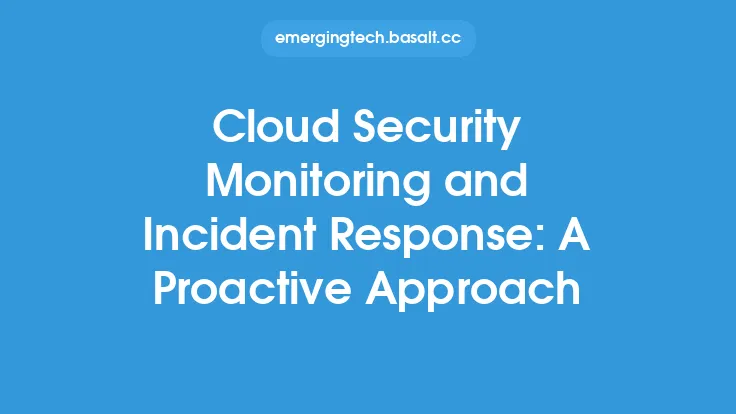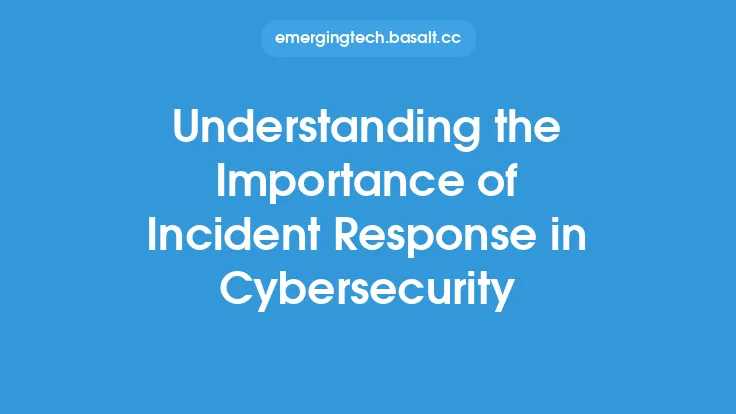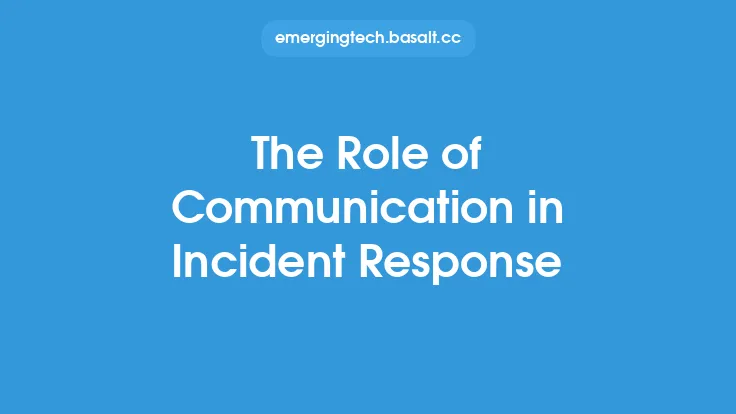Creating a culture of incident response awareness within an organization is crucial for effective cybersecurity. Incident response is not just about having a plan in place, but also about ensuring that all employees are aware of the potential threats and know how to respond in case of an incident. This awareness is essential for minimizing the impact of a security breach and ensuring business continuity.
Introduction to Incident Response Awareness
Incident response awareness refers to the knowledge and understanding of potential security threats and the procedures to follow in case of an incident. It involves educating employees on the importance of incident response, the types of threats they may encounter, and the steps they need to take to prevent or mitigate these threats. This awareness is critical for preventing security breaches, as employees are often the first line of defense against cyber threats. By being aware of the potential risks and knowing how to respond, employees can help prevent incidents from occurring in the first place.
Benefits of Incident Response Awareness
There are several benefits to creating a culture of incident response awareness within an organization. Firstly, it helps to prevent security breaches by educating employees on the potential threats and how to prevent them. This can include training on phishing attacks, password management, and other common security threats. Secondly, incident response awareness helps to minimize the impact of a security breach by ensuring that employees know how to respond quickly and effectively. This can include procedures for containing the breach, eradicating the threat, and recovering from the incident. Finally, incident response awareness helps to ensure business continuity by minimizing downtime and ensuring that critical systems and services are available.
Key Components of Incident Response Awareness
There are several key components to creating a culture of incident response awareness within an organization. Firstly, it is essential to have a clear incident response plan in place that outlines the procedures to follow in case of an incident. This plan should include procedures for containment, eradication, recovery, and post-incident activities. Secondly, it is essential to provide regular training and awareness programs for employees to educate them on the potential threats and the procedures to follow. This can include training on security best practices, threat awareness, and incident response procedures. Thirdly, it is essential to have a incident response team in place that is responsible for responding to incidents and ensuring that the organization is prepared to respond to potential threats.
Technical Aspects of Incident Response Awareness
From a technical perspective, incident response awareness involves understanding the potential threats to an organization's systems and data. This can include threats such as malware, phishing attacks, and denial-of-service attacks. It also involves understanding the procedures for responding to these threats, such as containment, eradication, and recovery. Technical staff should be aware of the tools and techniques used to respond to incidents, such as incident response software, threat intelligence platforms, and security information and event management (SIEM) systems. They should also be aware of the procedures for conducting a root cause analysis to identify the cause of the incident and prevent similar incidents from occurring in the future.
Implementing Incident Response Awareness
Implementing incident response awareness within an organization requires a structured approach. Firstly, it is essential to conduct a risk assessment to identify the potential threats to the organization and the likelihood of these threats occurring. Secondly, it is essential to develop a clear incident response plan that outlines the procedures to follow in case of an incident. Thirdly, it is essential to provide regular training and awareness programs for employees to educate them on the potential threats and the procedures to follow. Finally, it is essential to conduct regular exercises and simulations to test the incident response plan and ensure that employees are aware of the procedures to follow.
Measuring Incident Response Awareness
Measuring incident response awareness is critical to ensuring that the organization is prepared to respond to potential threats. This can be done through regular surveys and assessments to gauge employee awareness and understanding of incident response procedures. It can also be done through regular exercises and simulations to test the incident response plan and ensure that employees are aware of the procedures to follow. Additionally, metrics such as incident response time, mean time to detect (MTTD), and mean time to respond (MTTR) can be used to measure the effectiveness of the incident response plan and identify areas for improvement.
Challenges and Limitations
Creating a culture of incident response awareness within an organization can be challenging. One of the main challenges is ensuring that all employees are aware of the potential threats and know how to respond. This can be particularly challenging in large organizations with many employees. Another challenge is ensuring that the incident response plan is up-to-date and effective. This requires regular reviews and updates to ensure that the plan is aligned with the latest threats and technologies. Finally, there may be limitations to creating a culture of incident response awareness, such as limited resources or budget constraints.
Best Practices
There are several best practices for creating a culture of incident response awareness within an organization. Firstly, it is essential to have a clear incident response plan in place that outlines the procedures to follow in case of an incident. Secondly, it is essential to provide regular training and awareness programs for employees to educate them on the potential threats and the procedures to follow. Thirdly, it is essential to conduct regular exercises and simulations to test the incident response plan and ensure that employees are aware of the procedures to follow. Finally, it is essential to have a incident response team in place that is responsible for responding to incidents and ensuring that the organization is prepared to respond to potential threats.
Conclusion
Creating a culture of incident response awareness within an organization is critical for effective cybersecurity. It involves educating employees on the potential threats and the procedures to follow in case of an incident. By having a clear incident response plan in place, providing regular training and awareness programs, and conducting regular exercises and simulations, organizations can ensure that they are prepared to respond to potential threats and minimize the impact of a security breach.





